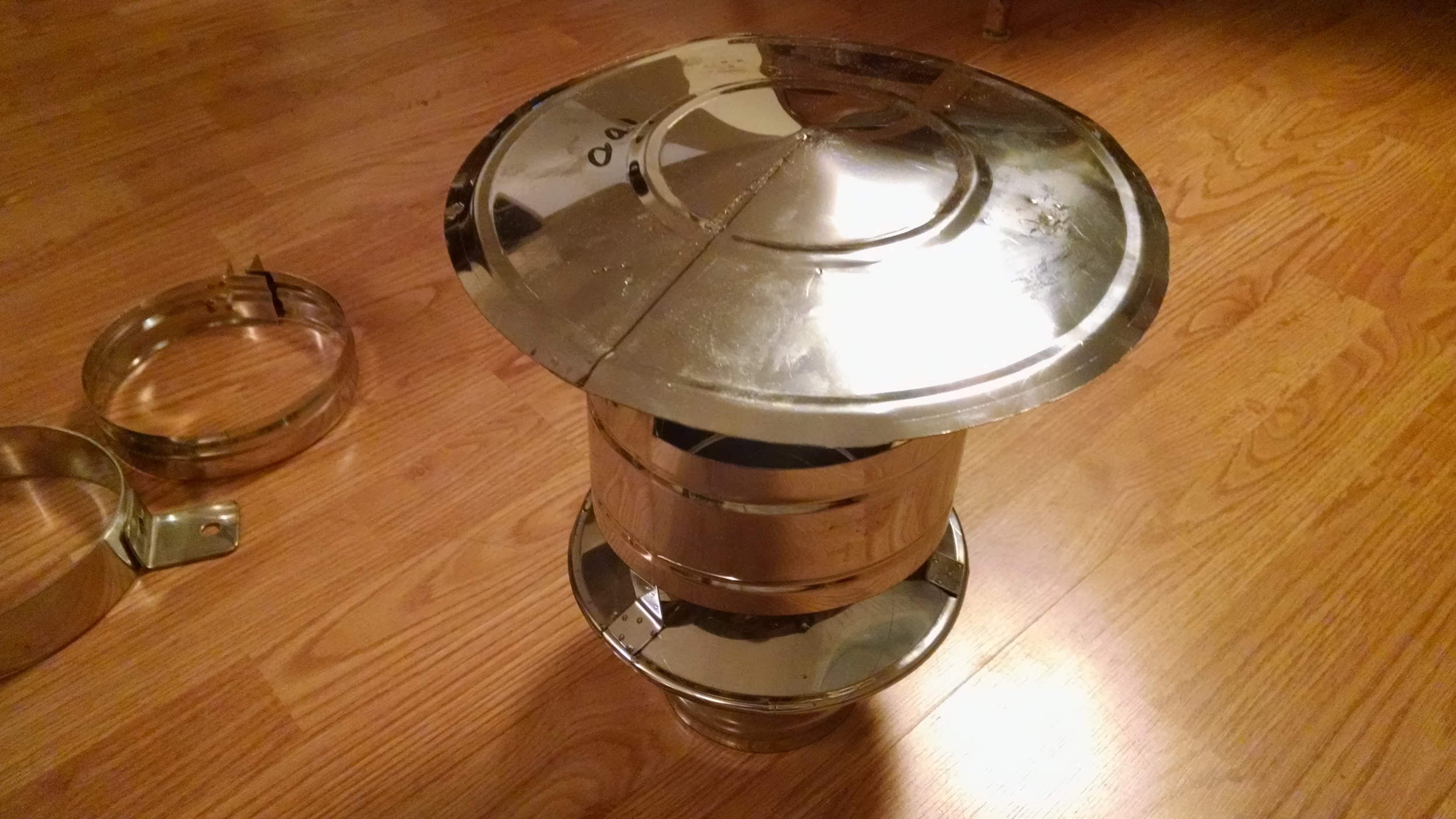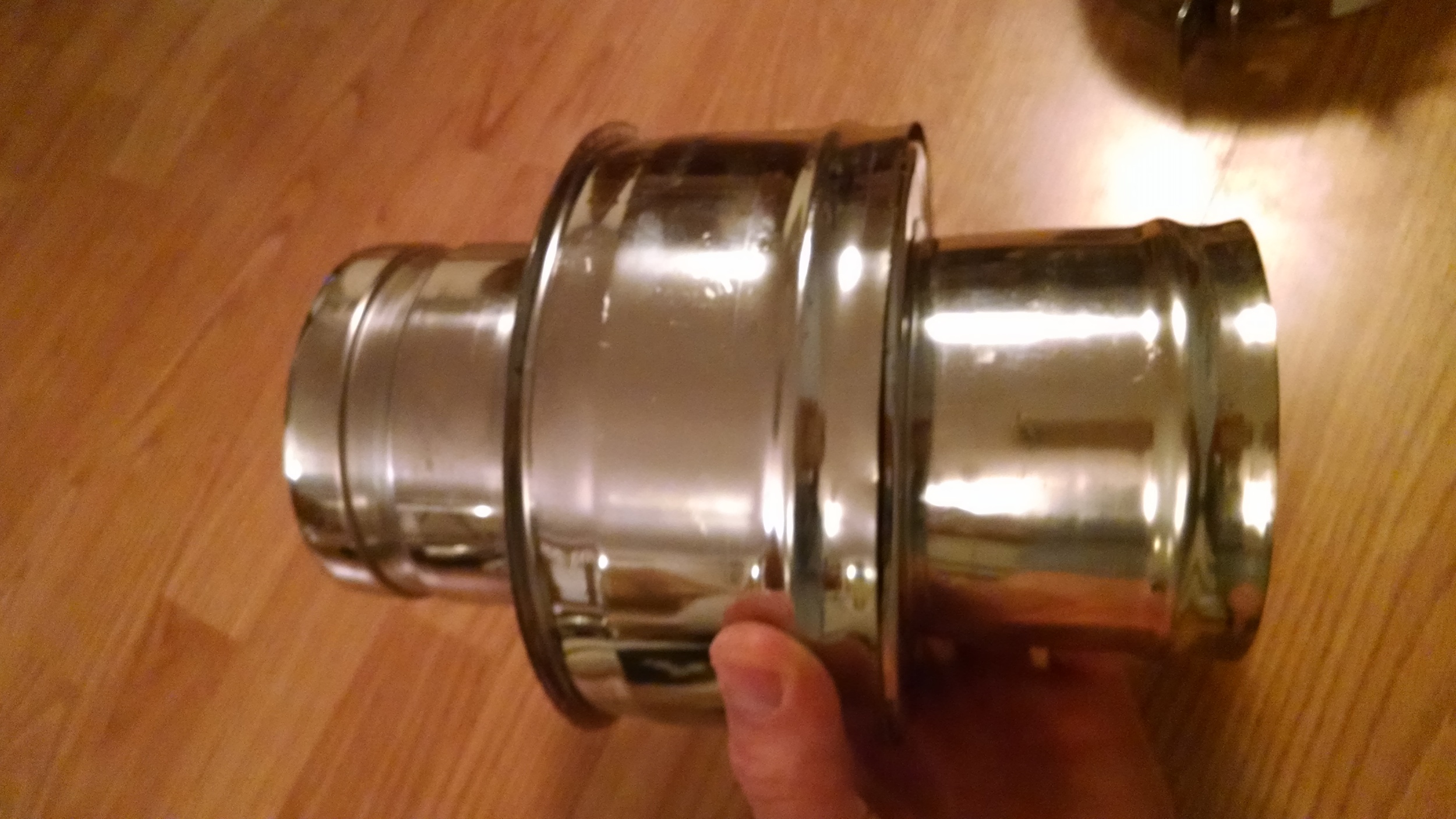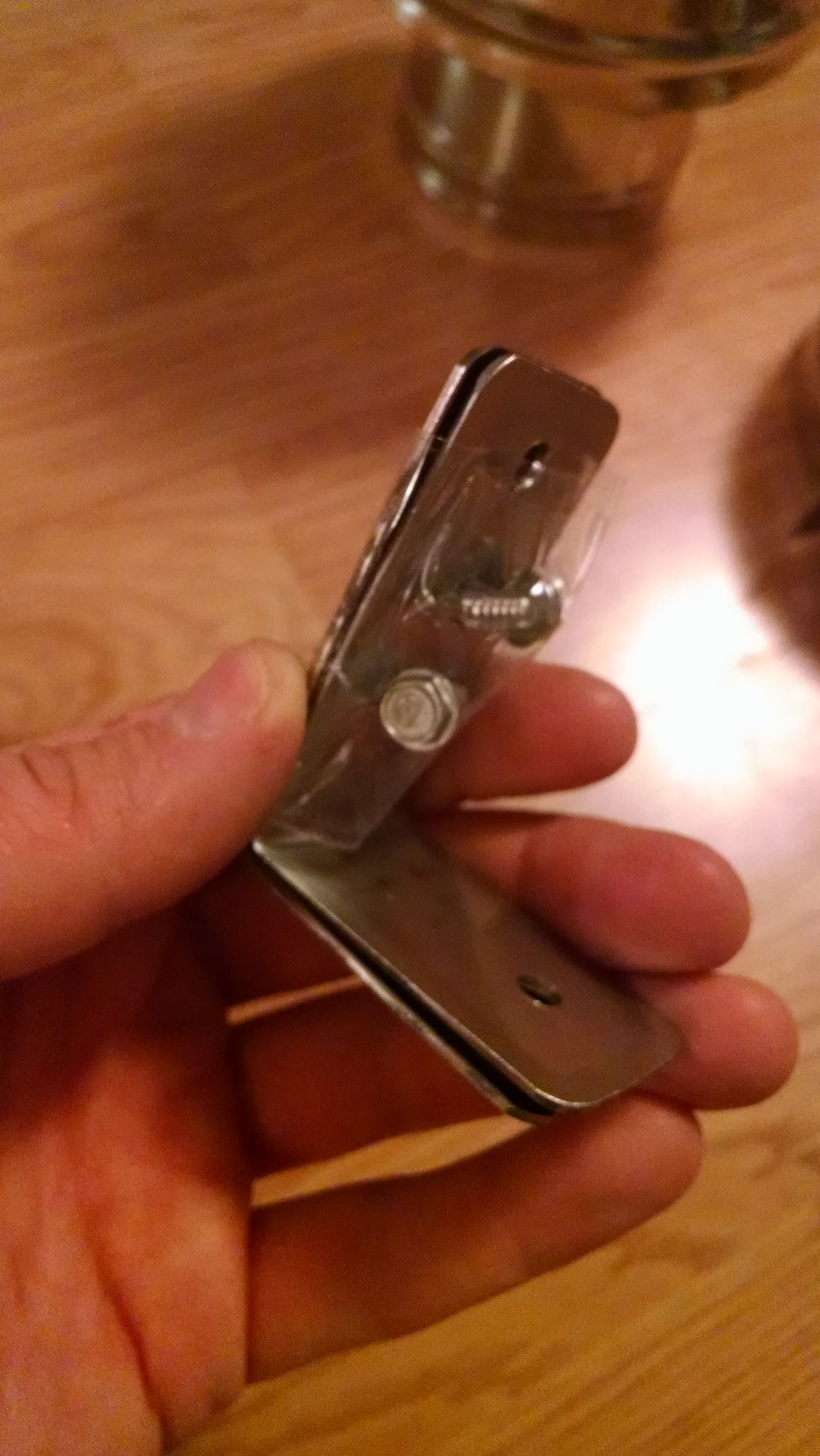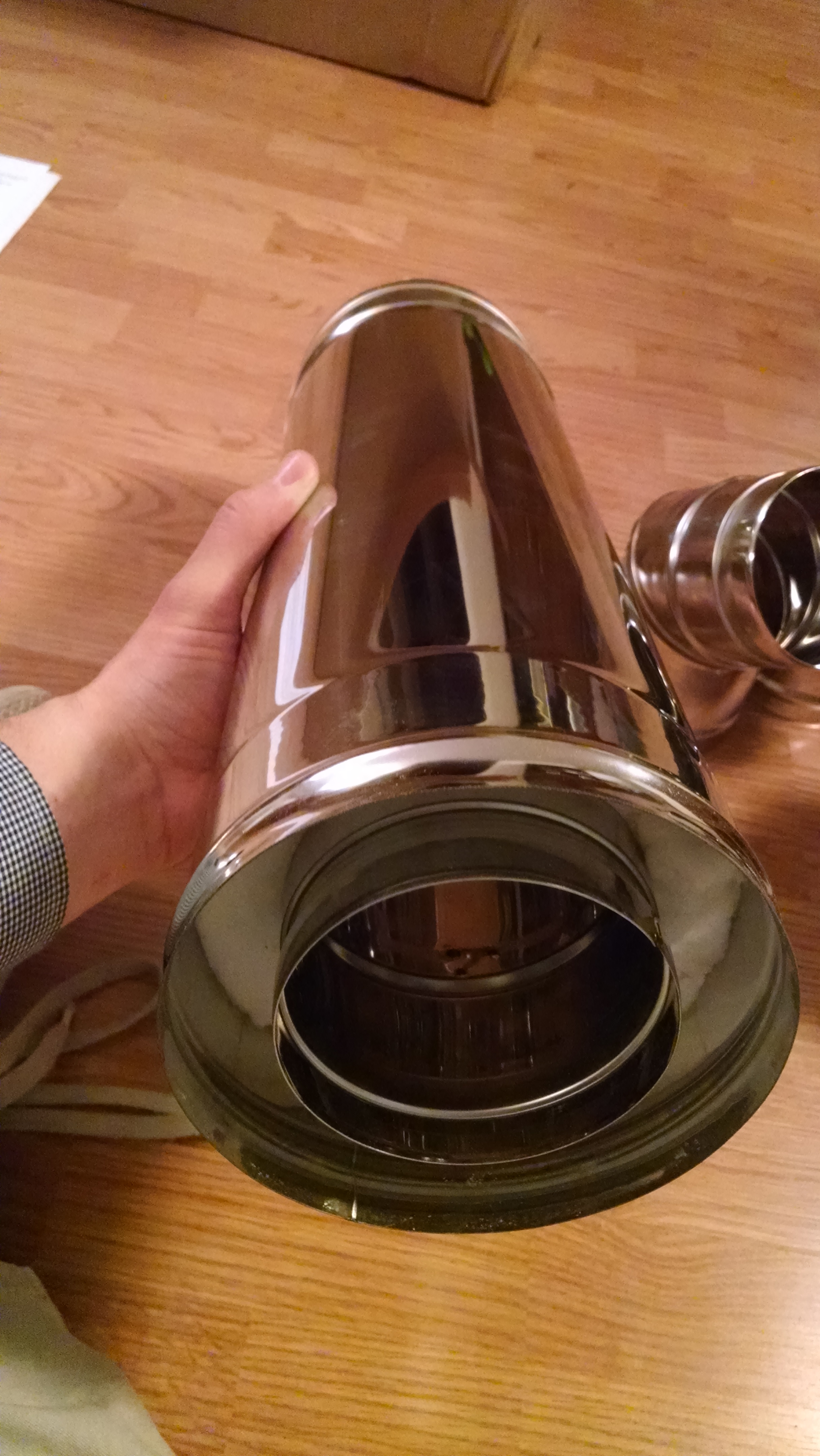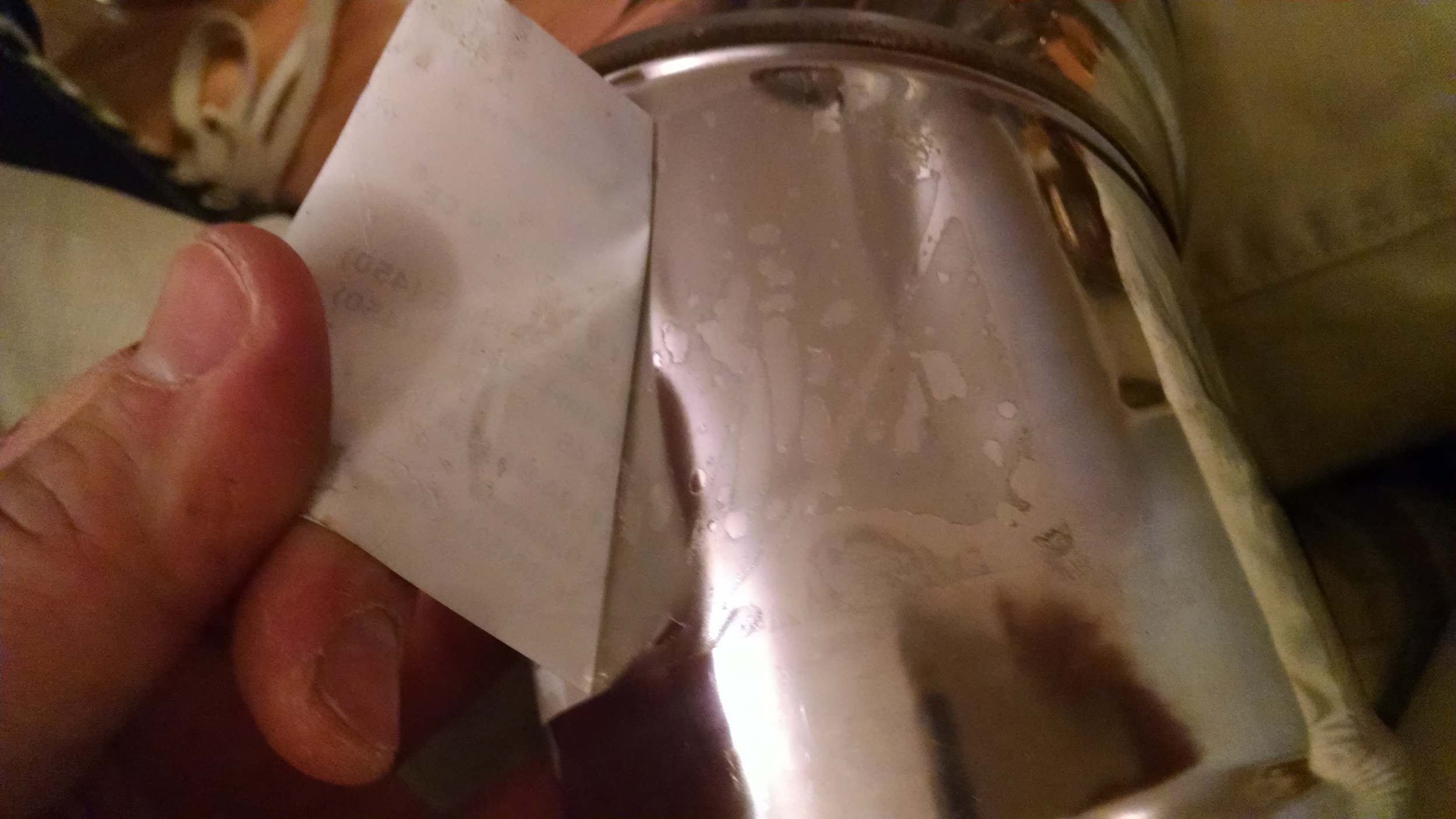2018 update: The kits TinyWoodStove.com is currently selling are from a different manufacturer than the parts shown in this post. The new kits include a gray pipe boot and a storm collar. You can find the current 4" RV Stovepipe Kit here. That's an affiliate link, so if you purchase through it, I might earn a small commission for referring you.
I want to add a storm collar to the flue so that it's a little less conspicuous. Most storm collars are not very deep because they're designed to shed water from where the top of a flashing meets a pipe. My dektite gasket doesn't need any help shedding water -- I just want something to conceal the majority of the orange silicone. To that end, I've purchased a storm collar that's pretty deep, and one size too big, and trimmed it to size with my aviation snips, then sanded the corners to remove sharp edges.
Some of these links are "affiliate links." If you decide to buy something based on our recommendation, it would be nice if you used the direct link from this page so that we can make a small commission for referring you (which doesn't cost you anything extra).
Here's the link to the one I bought.
Some assembly required. Stainless pop rivets, stainless worm drive clamps.
And here's the finished product. Hard to tell from the picture, but the bottom is beveled to match the curve of the roof.
Here's how the Airstream looks without the storm collar. The plug in the top of the flue is a plumber's test plug, which I'm using to keep the rain out when the flue is not deployed until I find something better.
With the collar.
Here it is with the flue deployed.
































